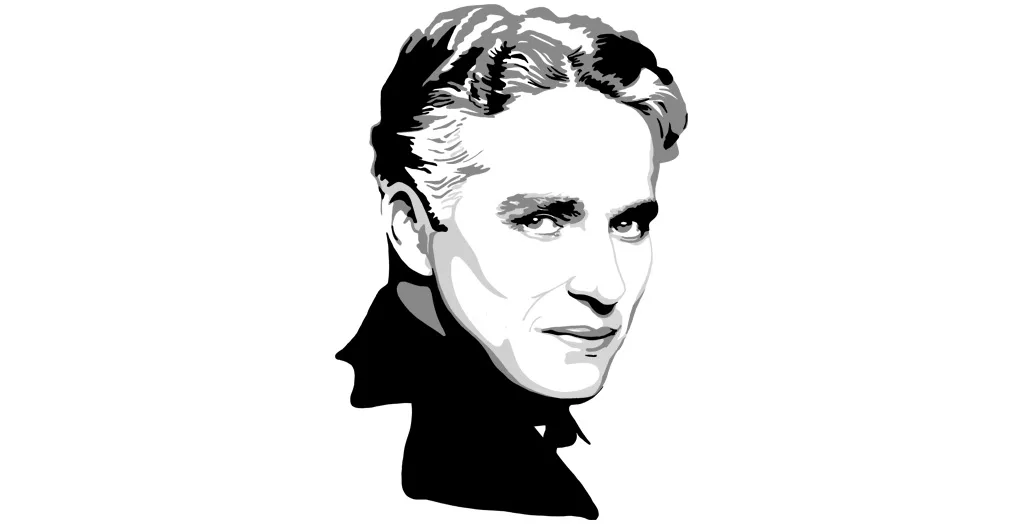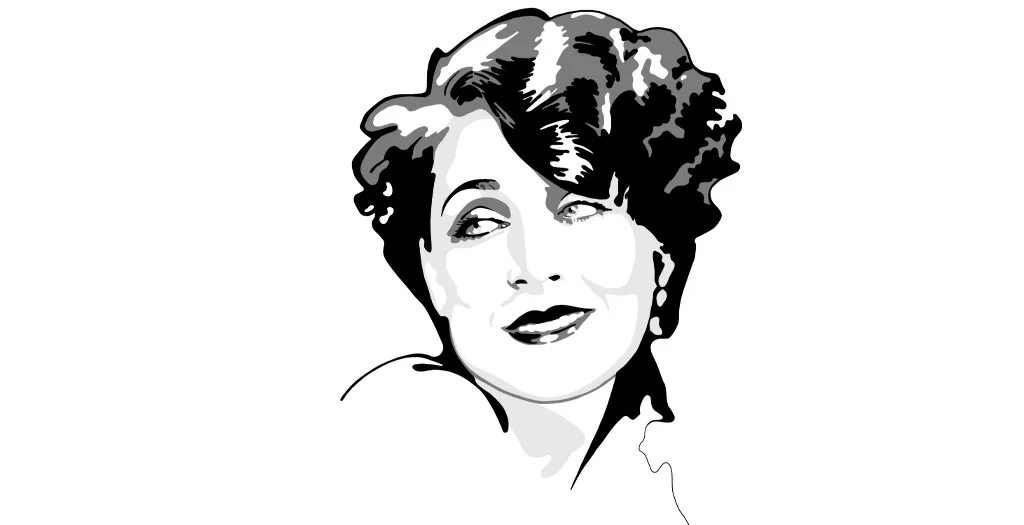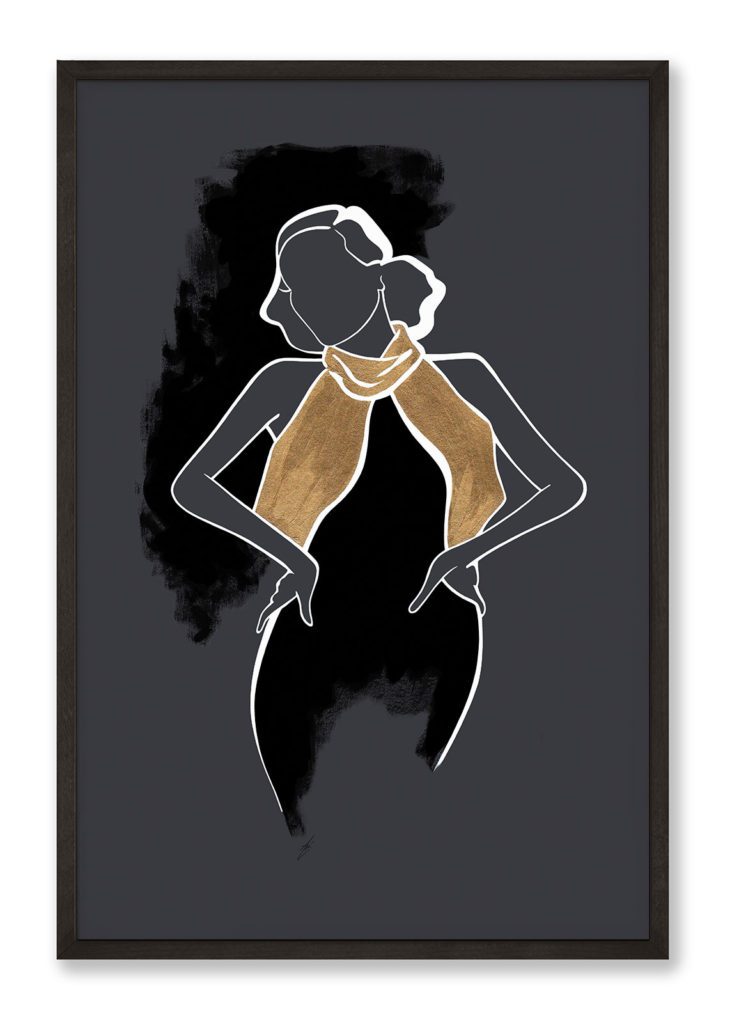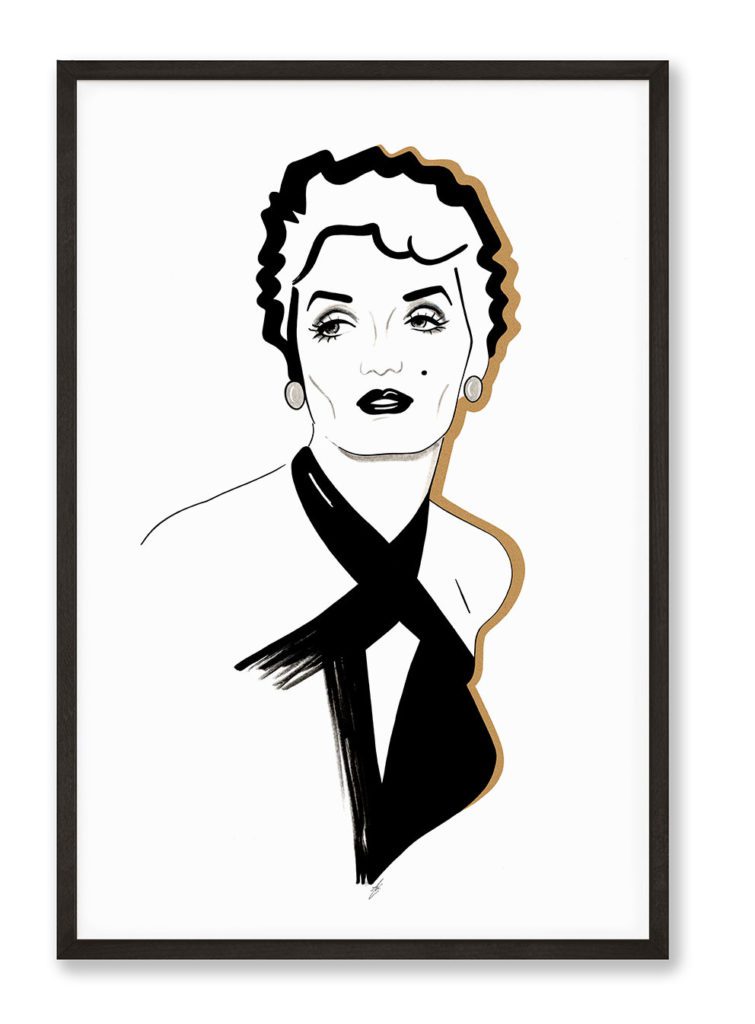Ingrid Bergman
International Actress with a Lasting Legacy




Hi, I'm Kate!
What I am most passionate about is to inspire you to see that your life is your own and biggest masterpiece.
Ingrid Bergman has not only played the female lead in Casablanca, but has also been the first International star, working successfully on both sides of the Atlantic, heavily influencing the future of both American and European cinema. Her naturalness and unpretentiousness inspired a new kind of woman and her private life kept politics, media and audiences busy.
LISTEN TO THE PODCAST
SUBSCRIBE TO THE PODCAST
Beginnings
Ingrid Bergman was born on August 29, 1915 in Stockholm. Her father Justus Samuel Bergman was a Swede, while her mother Friedel Henriette Auguste Louise was a native German born in Kiel. Thus, Ingrid spoke both Swedish and German fluently, spending many a summer in Germany. Actually, Ingrid was the youngest of three kids, but both her older siblings had already died in infancy, so Ingrid was raised an only child. When she was only two and a half years old, her mother died and she was raised by her father. As Justus was a photographer, he enjoyed taking photos of his only daughter and documented her life. But, when Ingrid was only 14 years old, her father died of stomach cancer. Subsequently Ingrid was raised by her paternal aunt Ellen who died shortly after as well. So, Ingrid again was relocated to live with her paternal uncle Otto and his wife. They already had five children, so Ingrid blended in.
With no one around her, she early on learned to create imaginary friends to keep herself entertained. And was keenly aware from an early age onwards that she wanted to become an actress and would often stage plays wearing her mother’s clothing. Her father had wanted her to become an opera singer and arranged for her to have voice lessons for three years before he died. So, she was well-set for an acting career and did receive a scholarship to the Royal Dramatic Theatre School. A couple of months into her studies, she was offered a part in a new play, which was extraordinary – usually, the actresses were expected to complete three years at the institute before getting such roles. And during her first summer break, a Swedish film studio hired Bergman right away and she left the institute to pursue acting full-time.
Early success in Sweden
Her first role was as an extra at age 17, her first speaking role was two years later in 1934 in the movie “Munkbrogreven”. The critics weren’t particularly nice to her – they called her „somewhat overweight“ and „hefty“ which might have been thanks to the unflattering striped costume, but they also called her „sure of herself“ and „with an unusual way of speaking her lines“. Afterwards she was offered a contract and was a working actress under the age of 20. Several roles followed and in 1936, when she was 21, Ingrid played her first lead performance in „Intermezzo“ opposite Swedish screen idol Gösta Ekman. This was an immense success and allowed Bergman to show her full potential. Director Gustav Molander would later say that he had created the script especially for her – but that it was Ingrid herself that made its success possible, nobody else. In 1938, Bergman starred in „Dollar“, a Scandinavian screwball comedy, about which has been written: „Ingrid Bergman’s feline appearance as an industrial tycoon’s wife overshadows them all.“
The movie „En kvinnas ansikte“ or „A Woman’s Face“ was a role created especially for Bergman, as she puts it in her diary: „my own picture, my very own. I have fought for it.“ It’s about a woman with a hideously burned face that is the leader of a blackmail gang. The movie would later be remade by MGM with Joan Crawford in the leading role.
Before Bergman turned 25 she had appeared in eleven Swedish movies – and although they weren’t masterpieces, they did give her the opportunity to show her immense talent, mostly in roles of complex characters dealing with uncertainty, fear and anxiety.
There were plans to extend Bergman’s success to Germany and she even signed a 3-picture-deal with UFA, the German film company. Pregnant with her first daughter, she did film one movie in Berlin in 1938. But when she understood the political situation and the implications of the Nazi regime, she returned to Sweden to never work in Germany again.
Start in Hollywood
Her talent caught the attention of David O. Selznick, who invited her to Hollywood in May 1939 to remake her Swedish success movie „Intermezzo“ in English. Bergman, though, was quite unsure about the project as she could not speak English and her acceptance by the audience. Actually, Selznick did share her worries – Bergman didn’t speak English, she was way too tall for an actress back then, her name sounded very German, which wasn’t great back then, and her natural eyebrows were to thick compared to the latest fashions. So, Bergman actually assumed she would return home to Sweden after the movie wrapped.
But – surprise, surprise – the audience accepted her without her having to undergo the typical Hollywood star treatment of getting altered altogether. Selznick actually ordered the makeup artists to lay off, to not make her something that she wasn’t. In contrast to other actresses that were changed beyond recognition, Selznick this time was quite aware that Bergman’s natural good looks might be a welcome change to Hollywood’s perfect synthetic beauty standard. As Selznick had the direct comparison with the star cast of „„Gone with the Wind“, which was filmed at the same time, he noted about Bergman the following: „Miss Bergman is the most completely conscientious actress with whom I have ever worked, in that she thinks of absolutely nothing but her work before and during the time she is doing a picture … She practically never leaves the studio, and even suggested that her dressing room be equipped so that she could live here during the picture. She never for a minute suggests quitting at six o’clock or anything of the kind … Because of having four stars acting in Gone with the Wind, our star dressing-room suites were all occupied and we had to assign her a smaller suite. She went into ecstasies over it and said she had never had such a suite in her life … All of this is completely unaffected and completely unique and I should think would make a grand angle of approach to her publicity … so that her natural sweetness and consideration and conscientiousness become something of a legend … and is completely in keeping with the fresh and pure personality and appearance which caused me to sign her.“
Success in Hollywood
„Intermezzo“ became a huge success and Bergman an instant star although bearing no make-up and being all natural and beautiful. This made a huge impact on Hollywood and the beauty standards. Basically all journalists, critics, magazines and newspapers fell in love with Bergman – with her freshness and simplicity, her natural dignity, her maturity of acting, her arresting performances, her charm and sincerity, her infectious vivaciousness as well as her natural appearance with hardly any makeup. She was loaned to other studios and made several successful movies, always pleading for the difficult roles that no-one would expect her to play – like for example the „bad girl“ in Victor Fleming’s „Dr. Jekyll and Mr. Hyde“, the saucy barmaid. And she also filmed another successful Swedish movie – „June Night“.
In Winter 1942/1943, „Casablanca“ opened in American cinemas. Bergman starred opposite Humphrey Bogart. As we all know, the movie was an immense success and, till today, is one of the most revered Hollywood classics – for its plot, the script, the direction and the actors involved. Although reviewers hailed Bergman’s performance, Bergman herself did not like the movie that much, she felt there so many other films she had made that were way more important than Casablanca. But she acknowledged the following: “I feel about Casablanca that it has a life of its own. There is something mystical about it. It seems to have filled a need, a need that was there before the film, a need that the film filled”
Her subsequent movies between 1943 and 1946 – „For Whom the Bell Tolls“ opposite Gary Cooper, „Gaslight“ opposite Charles Boyer under the direction of George Cukor, „The Bells of St. Mary“ opposite Bing Crosby, Hitchcock’s „Spellbound“ opposite Gregory Peck, „Saratoga Trunk“ opposite Gary Cooper and Hitchcock’s „Notorious“ – were all flat-out successes, critically and at the box-office.
But, the years 1948 to 1950 proved to be the most difficult years in Hollywood. Bergman did „Arch of Triumph“, „Joan of Arc“ and „Under Capricorn“ – but they were not successful. Mostly because the scandal around the affair of Bergman and Roberto Rossellini broke and the audiences were unhappy about it to say the least. „Joan of Arc“ particularly also reviewed really poor reviews and was cut short. Only in 1998 it was restored to its full length.
Italian movies
So, what happened next? Well, when filming on the previous mentioned movies had wrapped, Bergman wrote Rossellini that she greatly admired him and would like to film a movie with him. So, he invited her to Italy and cast her for his next project „Stromboli“. During production, Bergman became pregnant, which caused an uproar in the US. The US as a whole felt betrayed. While they had hailed Bergman as „Saint Bergman“ when she played Joan of Arc, she was now seen as „a powerful influence for evil“. After her divorce from husband #1, Bergman returned to Italy, married husband #2, Roberto Rossellini, and made movies with him – „Stromboli“, „Europa ´51“, „Viaggio in Italia“ and „La Paura“. And they bombed. They were not received very well back then. Why? Well, mainly because Rossellini was no Hollywood director, but did „neorealist“ films, usually with non-professional actors. And he used Bergman in his movies as if she were a nonprofessional. He was accused of ruining her very successful career.
But, although the movies were commercial failures and critically panned back in the 1950s, they are now met with greater appreciation. Martin Scorsese, for example, counts „Viaggio in Italia“ as one of his favorite movies. Bergman and Rossellini inspired the New French Wave of cinema as well as the beginning of a modern cinematic era. Godard, Fellini, Antonioni, Abbas Kiarostami and Nuri Bilge Ceylan are just some of the filmmakers that were heavily influenced by the work that Rossellini and Bergman did. These two were actually the pioneers of European modern filmmaking.
Stage Success
But, Ingrid Bergman was not only active in front of the camera, but also acted on stage frequently. It was in 1940, when she was just done filming „Intermezzo“ that she made her stage debut in the play „Liliom“ opposite Burgess Meredith, although she was still in the process of learning English. Nevertheless, she was a full success. And again in 1941, when she starred in „Anna Christie“. When she appeared in October 1946 as „Joan of Lorraine“, all tickets were fully book during its twelve week run and „Newsweek“ called her „The Queen of Broadway Season“. Her salary was a whopping $129,000 as well as 15% of the gross revenue. She was officially the most popular actress in America at that time. In 1953, she appeared on the stages of Naples, Barcelona, Paris and Stockholm in the Rossellini directed play „Joan of Arc at the Stake“, which was generally well received.
In 1956, Bergman performed at the Theatre de Paris with the play „Tea and Sympathy“ which was an instant hit.
In 1962, she appeared in „Hedda Gabler“ in the Theatre Montparnasse in Paris and in 1965 in „A Month in the Country“ opposite Michael Redgrave in London’s West End.
In 1967, Bergman starred apposite Colleen Dewhurst and Arthur Hill in „More Stately Mansions“ at the Ahmanson Theatre in Los Angeles and the show ran for 142 successful performances to a sold-out house.
In 1971, Bergman appeared in London in „Captain Brassbound’s Conversion“, which was a commercial success – though critically not so much. And, in 1973, she returned to London’s West End to star opposite John Gielgud in „The Constant Wife“, where she would also play „Waters of the Moon“ in 1977 and 1978, which was her last stage performance.
Back to Mainstream and Hollywood
In 1956, after her Italian movies, Ingrid Bergman turned to French movies – one French movie to be exact: She filmed „Elena and Her Men“ opposite Mel Ferrer as Bergman had wanted to act under the direction of Jean Renoir for a long time. The movie was a great success in Paris, when it opened and got rave reviews – on both sides of the Atlantic.
Then, Twentieth Century Fox wanted Bergman to star opposite Yul Brynner in „Anastasia“. They did gamble as Bergman had not acted in a Hollywood movie for seven years and the audience’s reception was uncertain. But, in the end, everybody raved about her performance; Bergman did not only receive her second Academy Award for Best Actress for this movie but also made her triumphant comeback with a major Hollywood studio.
Next, she starred in Indiscreet (1958) opposite Cary Grant and in „The Inn of the Sixth Happiness“ all with great critical acclaim and box office success.
1964’s „The Visit“ and 1965’s „The Yellow Rolls-Royce“ were solid movie projects, though filmed outside the US.
Only in 1969 did Bergman return to American films, filmed in America with „Cactus Flower“ opposite Walter Matthau and a young Goldie Hawn.
TV
Unbeknownst to most probably many, Ingrid Bergman was also active in television. In 1959, she made her television debut in an episode of „Startime”. In 1961, she played a bereaved wife in Twenty-four hours in a a Woman’s Life“ and in 1962, she starred opposite Michael Redgrave and Ralph Richardson in „Hedda Gabler“, made for BBC and CBS.
In 1966, Bergman acted in a TV version of Jean Cocteau’s one-character play „The Human Voice“, for which she was hailed.
The last two roles
Her two most demanding roles, which were the pinnacle of her acting career were „Autumn Sonata“ by Swedish filmmaker Ingmar Bergman, for which Ingrid Bergman received many accolades and the TV mini-series „A Woman called Gold“ about the late Israeli Prime Minister Golda Meir. Especially this last one was of significance to Ingrid Bergman and although she was very ill during filming, she did champion through it. Four month after filming wrapped, Ingrid Bergman died on her 67th birthday from cancer that she had battled with for eight years.
Awards and Honors
Ingrid Bergman received a great number of medals, awards and accolades.
She was nominated seven times for the Academy Awards and won three times: 1944 for Gaslight, 1956 for Anastasia and 1974 for her supporting role in Murder on the Orient Express.
She also was nominated for the Emmy Awards three times and won twice: 1960 for „The Turn of the Screw“ and for her portrayal of Golda Meir in „A Woman Called Golda“, which her daughter Pia Lindström accepted on her passed mother’s behalf. But she also receive a Tony Award in 1947 for her performance in „Joan of Lorraine“ as well as four Golden Globe Awards, a BAFTA Award and a Volpi Cup. Apart form these accolades, she received amongst others the Illis Quorum, the medal given to artists of significance by the King of Sweden, the David di Donatello’s Golden Medal of the Minister of Tourism, given by the Academy of Italian Cinema, the New York Film Critic’s Award and Italy’s Donatello Award.
Relationships
Petter Aron Lindström – On July 10, 1937, 21-year-old Ingrid Bergman married dentist Lindström and had a daughter with him, Pia, one year later. He followed Bergman in 1941 to the US, where Lindström stayed with daughter Pia in a house in Rochester, New York, studying surgery at the University, while Bergman travelled for filming. Later they moved to San Francisco, where Lindström would complete his internship at a hospital. Contrary to popular opinion, Lindström saw Bergman quite differently – vain and absorbed with her popular image. He saw himself as the head of the family and handled Bergman’s career and financial affairs. He also was the main contact for daughter Pia when Bergman travelled. In 1950, when the Rossellini scandal broke out and Bergman fled to Italy, she begged Lindström for a divorce and contact with Pia, both of which he refused. That same year she gave birth to her son Renato, divorced Lindström according to Mexican law and married Rossellini, from which she had twin girls in 1952. It would take five more years for Ingrid Bergman to be reunited with her daughter Pia, while father Lindström would stay bitter and unforgiving towards Bergman. Although he has been quoted to have said that he lived with her infidelities and affairs because of the money she brought in. Which to me does not sound like true love. And also – which father keeps a daughter away from her mother for seven years, throughout her teenage years when she definitely needs a mother? That is simply cruel and unforgivable.
Roberto Rossellini – Ingrid Bergman’s affair and later marriage to Rossellini was accompanied by many personal sacrifices and a witch hunt that Bergman had to endure from and in the US. It was actually Senator Edwin C. Johnson who denounced Ingrid Bergman on the floor of the United States Senate saying thathad perpetrated an assault upon the institution of marriage” and „was a powerful influence of evil“. The public as well as the media – the whole of the US felt betrayed by Bergman – although she had portrayed prostitutes, a villainess and women in extra-marital affairs, the Selznick public campaign of building her up as a normal, healthy unneurotic career woman, devoid of scandal and with an idyllic home life“ backfired greatly. Ingrid Bergman had to flee to Italy and leave behind her young daughter to escape the witch hunt. But it was not only the US that accused Bergman, but also Sweden, or more accurately: The conservatives. The feminists in Sweden fully supporter Bergman. The marriage with Rossellini had problems though. Rossellini didn’t like Bergman’s friends and was afraid that she would return to the US and was very possessive of her. He on the other hand had an affair with Sonali Das Gupta while filming in India in 1957. They divorced that very year after seven years of marriage. Her legacy in Showbusiness lives on in daughter Isabella Rossellini, who became an actress and a Lancome model as well as granddaughter Elettra Rosellini Wiedemann, who followed suit and became a model.
Lars Schmidt – One year after her divorce from Rossellini, Ingrid Bergman married theatrical entrepreneur Lars Schmidt. They lived at Choisel near Paris and enjoyed summers on Lars’s private island off the coast of Sweden. After 17 years of marriage, they divorced in 1975, but remained friends. Schmidt was by her bedside when she died in 1982.
Affairs – Ingrid Bergman is known for having had affairs with her co-stars. Amongst them co-stars Spencer Trace and Cary Cooper, director Victor Fleming, musician Larry Adler, Anthony Quinn, Howard Hughes (who actually bought RKO as a present for her!), photographer Robert Capa and Gregory Peck. Interesting fact: Hitchcock’s movie „Rear Window“ starring Grace Kelly is based on the relationship of Bergman and Capa – didn’t know that until now.
Friendships
Alfred Hitchcock – Bergman and Hitchcock became great friends and admired each other greatly. They worked together very well. Bergman was not the typical Hitchcock blonde, but another version. More defiant.
Cary Grant – They starred together in „Notorious“ and „Indiscreet“ and what Cary Grant liked about her is noted by his biographer Scot Eyman: “Grant found that he liked Ingrid Bergman a great deal. She was beautiful, but lots of actresses are beautiful. What made Bergman special was her indifference to her looks, her clothes, to everything except her art.”
David O. Selznick – Ingrid Bergman became friends with Selznick and his wife when she came over to the US to film the US version of „Intermezzo“. The friendship remained for the remainder of her life.
Style
All in all, her style – both in acting and life – was naturalness and unpretentiousness. She was different, she was unique – and she had her own back. No matter the circumstances, she did what she thought was right and always tried to be the best human being she could be, knowing full well that she was fallible and simply a woman – not a saint.
In 2015, a Swedish documentary film was made by Stig Bkörkmann, Ingrid Bergman: In Her Own Words – and „it leaves behind the image of a uniquely strong, independent woman whose relaxed modernity was way ahead of its time.“ Quoting the Hollywood Observer.
Above all, she was neither a Swedish actress, nor an American actress. She was the first international star – beloved by everybody, acting and filming in five different languages (English, French, German, Italian and Swedish) in various countries. The Rossellini scandal, the dismissal of her European movies as well as the image of Casablanca as one of the greatest movies, put her international work often at the backseat. But she truly was the first international star that influenced the future of Cinema both in Europe as well as the US.
With all my love!
xx






